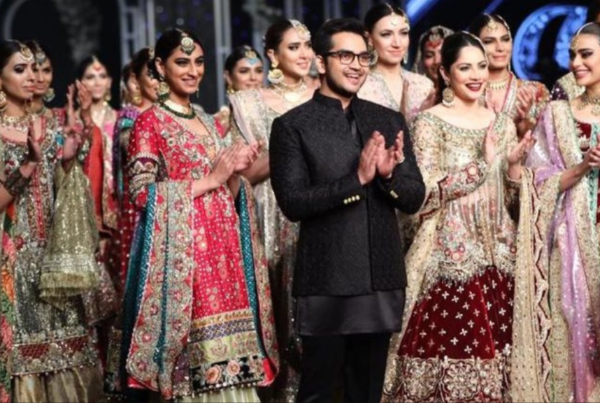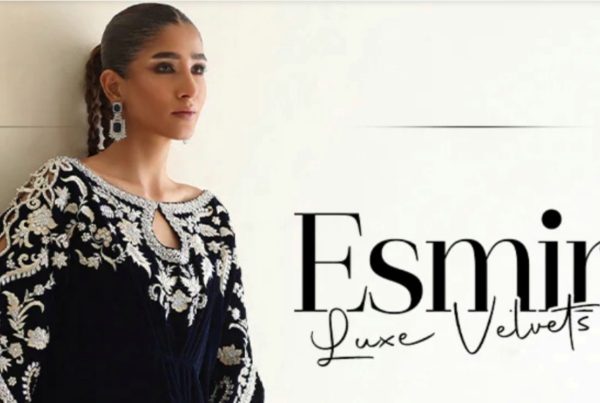Not too long ago, in a land of gender stereotypes and such, men wearing bright colours or anything out of the norm was considered a big no no. Thankfully, we have come a long way from those days because of some exceptional designers, amongst other factors.
Yet the realms of Pakistani menswear have always been pretty unclear to me.
I for one always questioned why our local menswear either all looked too similar, or was way too extravagant, since I don’t know anyone who would be willing to wear a heavily embroidered bright pink sherwani, even to a wedding. So why are we making either insipid and forgettable or unpractical and OTT designs, instead of being innovative and setting a middle ground? Be it on the runway or designers’ boutiques, you are bound to see some questionable pieces that’ll make you cringe. So, to clarify my confusions I decided to speak to some of Pakistan’s top menswear designers and ask them their opinions; why they design what they do, and if their innovations meet the demands of the Pakistani market.
Amir Adnan
 Award winning menswear designer, Amir Adnan’s designs are probably an exception to my claim, usually sleek and minimal, I have rarely seen a questionable piece by him.
Award winning menswear designer, Amir Adnan’s designs are probably an exception to my claim, usually sleek and minimal, I have rarely seen a questionable piece by him.
He told me how when designing anything it is important for him to question whether at any point in time he would wear the design at hand. Talking about his own style, Adnan refers to himself as the most “extreme of a mainstream person†and says that even when he decides to experiment with an outfit, he is unlikely to wear it more than once, so why expect his clients to be any different? He explained that experimenting isn’t common amongst men because it’s just not practical.
The most important thing to keep in mind when it comes to Pakistani menswear, Adnan told me, is to make sure you stay true to your roots and not design with the western market in mind, since our men aren’t ready to experiment too much.
The key to a successful design, he concluded, is “Practical and normal clothes with a twist in the styling.†Perhaps that theory is what is missing the most amongst our designing market.
HSY
 The king of couture, who was full of interesting insights on the current fashion scene, straight out told me I’m wrong (ouch…)! He said I’m focusing too much on runway fashion where new designers tend to go over the top to make a statement, hence giving the others a bad name.
The king of couture, who was full of interesting insights on the current fashion scene, straight out told me I’m wrong (ouch…)! He said I’m focusing too much on runway fashion where new designers tend to go over the top to make a statement, hence giving the others a bad name.
The most valid point HSY made was that men don’t shop like women, they don’t look at trends instead they look at investment pieces and are usually willing to spend on a piece and incorporate it by mixing and matching more often than women would. Which is why the trends for menswear tend to remain more or less the same, and which is also the reason behind keeping the colours and silhouettes of garments classic.
However, when it comes to grooms wear he encourages incorporation of colour and embroidery. “The groom needs to look like a shehzada!†HSY claims, and usually the women in his life don’t let him settle for something simple for his big day.
Hence, the same rules don’t apply when it comes to grooms wear, perhaps much like women and their bridal wear which is hardly ever designed along the lines of ‘less is more!’
Republic by Omar Farooq
 With Fawad Khan as his cover boy, it’s impossible to not have noticed Republic steadily rising to the top of the designer hierarchy. Farooq, the only designer to show a complete menswear collection at PLBW this year, has shown us how prints and colours can look suave on men, if done right.
With Fawad Khan as his cover boy, it’s impossible to not have noticed Republic steadily rising to the top of the designer hierarchy. Farooq, the only designer to show a complete menswear collection at PLBW this year, has shown us how prints and colours can look suave on men, if done right.
He too had the same theories as the other two, that the Pakistani man isn’t suave enough to try out something new, and when a client comes in you give them what they want instead of trying to impose your ideas on them, even if their demands are conventional or typical. He tells me, even though men come in asking for ‘something different’, 99% of the time there’s nothing different about what they want! However, the last few years have brought about a change; the ‘Instagram generation’ as he calls it, is more prepared and clearer about their demands and is up for trying out Farooq’s idea of different.
Furthermore, he points out that in Pakistan, where there is no designer equity and Zara is considered a high end luxury brand, it’s difficult to sell real high-end couture garments as some people are yet to accept that wearing a brand label comes with a heavy price-quite literally!
What’s interesting is that Amir Adnan and Omar Farooq both agreed that menswear on the runway only has a capacity of 20% for the designer’s creativity, while 80% has to be wearable and appeal to the general audience. HSY clarified to me that silhouettes are unlikely to change drastically which is why the creative focus remains on the colours and embellishments, which may tend to make the outcome slightly volatile when done wrong.
I suppose it’s unfair to blame the designers, who are only catering to the demands of the people and giving them what they want. If clients choose to play it safe every time, our designers will give in since the customer is always right!




